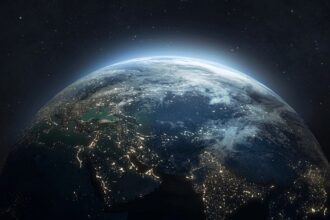Imagine a world drowning in plastic and choking on heat—this isn’t the future. It’s today.
While we often see plastic as litter on beaches or clogging city drains, the story is far deeper and darker. Plastic isn’t just a pollution problem; it’s a major contributor to climate change. From production to disposal, plastic leaves a carbon footprint that is heating up our planet.
What Is Climate Change and How Is Plastic Involved?
Climate change refers to long-term shifts in temperatures and weather patterns—primarily driven by human activities, especially the burning of fossil fuels. Plastic pollution, on the other hand, is the accumulation of synthetic plastic products in the environment, harming wildlife, marine life, and ecosystems.
“Plastic is essentially fossil fuel in another form—over 99% of plastic is made from chemicals sourced from fossil fuels like oil and natural gas.”
This means every plastic bag, bottle, and wrapper carries a carbon cost.
Startling Statistics That You Can’t Ignore
- More than 380 million tonnes of plastic are produced every year worldwide (UNEP, 2023).
- If plastic were a country, it would be the fifth-largest emitter of greenhouse gases in the world (Center for International Environmental Law, 2019).
- By 2050, plastic production and incineration could emit over 2.8 gigatons of CO₂ per year—equal to the emissions from 615 new coal-fired power plants (CIEL Report, 2019).
- Only 9% of plastic waste has ever been recycled globally. The rest is either burned, landfilled, or ends up in the environment (OECD, 2022).
“The plastic crisis is not just a pollution crisis—it’s a climate crisis in disguise.”
The Life Cycle of Plastic: A Climate Nightmare
- Extraction & Production: Oil and gas extraction is energy-intensive and emits massive amounts of CO₂ and methane.
- Manufacturing: Turning raw materials into plastic involves high-temperature processing, consuming more fossil fuels.
- Usage: Often for just minutes (think: straws, cups), yet they linger for centuries.
- Disposal: Most plastics are incinerated, releasing toxic chemicals and greenhouse gases into the atmosphere.
“Every stage of plastic’s life cycle is a threat to the planet.”
Plastic in Oceans: A Double Threat
Marine plastic not only kills marine animals but also disrupts carbon-absorbing ocean systems like plankton and coral reefs.
“Plastic pollution in oceans is hampering one of Earth’s biggest climate buffers.”
Solutions: What Can Be Done?
- Reduce plastic production and switch to sustainable alternatives like biodegradable materials.
- Strengthen recycling infrastructure and invest in circular economy strategies.
- Enforce strict global policies to cut down single-use plastic.
- Support innovations in carbon-neutral or carbon-negative plastic alternatives.
Conclusion: The Time to Act Is Now
Plastic isn’t just clogging our environment—it’s heating up our climate. If we don’t tackle the plastic problem as part of the climate problem, we risk pushing the planet past irreversible tipping points.
“Solving climate change means solving the plastic crisis. We cannot win one without confronting the other.”
Let’s reduce, reuse, and rethink plastic—for a cooler, cleaner planet.














